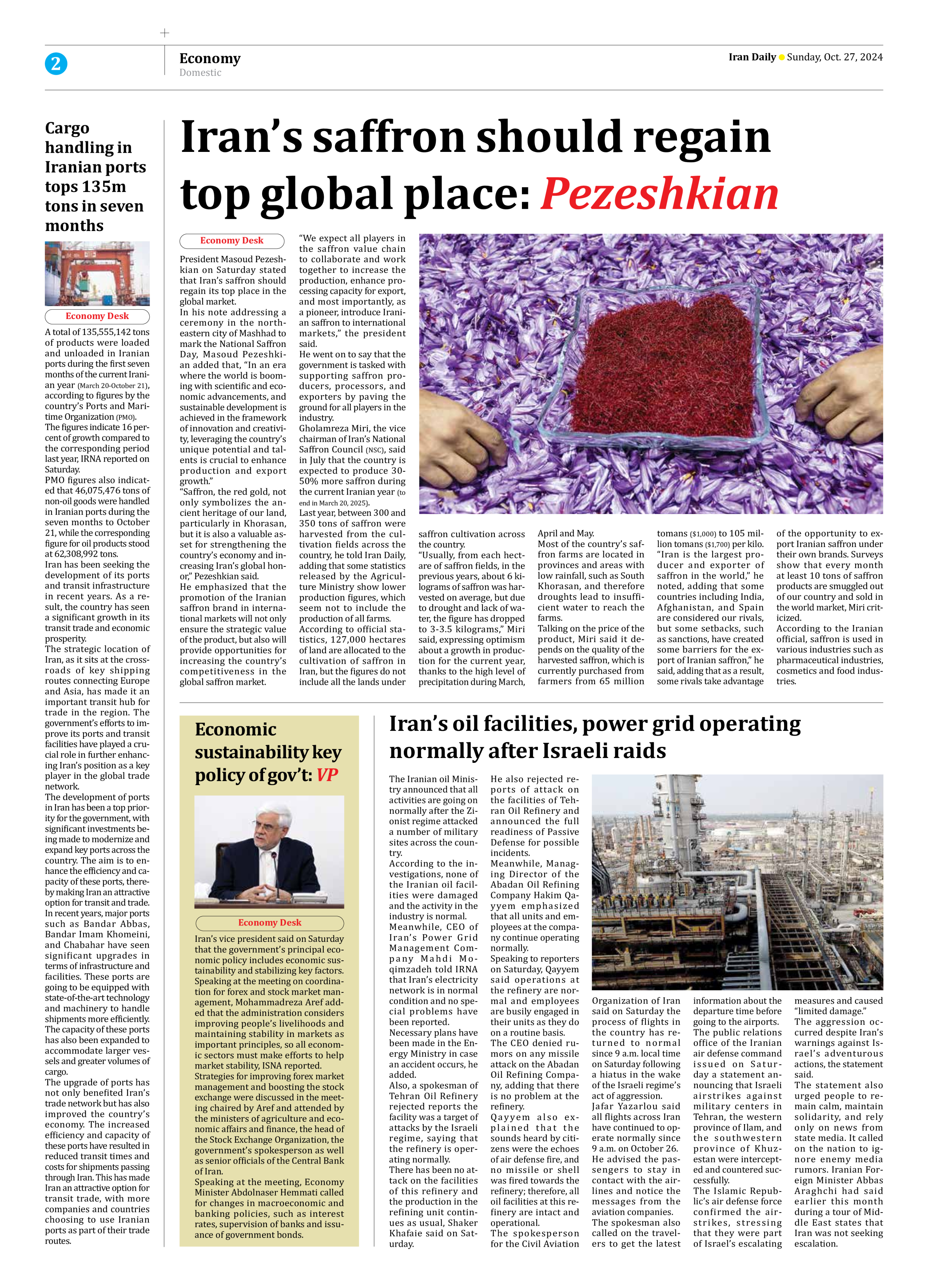
Iran’s saffron should regain top global place: Pezeshkian
President Masoud Pezeshkian on Saturday stated that Iran’s saffron should regain its top place in the global market.
In his note addressing a ceremony in the northeastern city of Mashhad to mark the National Saffron Day, Masoud Pezeshkian added that, “In an era where the world is booming with scientific and economic advancements, and sustainable development is achieved in the framework of innovation and creativity, leveraging the country’s unique potential and talents is crucial to enhance production and export growth.”
“Saffron, the red gold, not only symbolizes the ancient heritage of our land, particularly in Khorasan, but it is also a valuable asset for strengthening the country’s economy and increasing Iran’s global honor,” Pezeshkian said.
He emphasized that the promotion of the Iranian saffron brand in international markets will not only ensure the strategic value of the product, but also will provide opportunities for increasing the country’s competitiveness in the global saffron market.
“We expect all players in the saffron value chain to collaborate and work together to increase the production, enhance processing capacity for export, and most importantly, as a pioneer, introduce Iranian saffron to international markets,” the president said.
He went on to say that the government is tasked with supporting saffron producers, processors, and exporters by paving the ground for all players in the industry.
Gholamreza Miri, the vice chairman of Iran’s National Saffron Council (NSC), said in July that the country is expected to produce 30-50% more saffron during the current Iranian year (to end in March 20, 2025).
Last year, between 300 and 350 tons of saffron were harvested from the cultivation fields across the country, he told Iran Daily, adding that some statistics released by the Agriculture Ministry show lower production figures, which seem not to include the production of all farms.
According to official statistics, 127,000 hectares of land are allocated to the cultivation of saffron in Iran, but the figures do not include all the lands under saffron cultivation across the country.
“Usually, from each hectare of saffron fields, in the previous years, about 6 kilograms of saffron was harvested on average, but due to drought and lack of water, the figure has dropped to 3-3.5 kilograms,” Miri said, expressing optimism about a growth in production for the current year, thanks to the high level of precipitation during March, April and May.
Most of the country’s saffron farms are located in provinces and areas with low rainfall, such as South Khorasan, and therefore droughts lead to insufficient water to reach the farms.
Talking on the price of the product, Miri said it depends on the quality of the harvested saffron, which is currently purchased from farmers from 65 million tomans ($1,000) to 105 million tomans ($1,700) per kilo.
“Iran is the largest producer and exporter of saffron in the world,” he noted, adding that some countries including India, Afghanistan, and Spain are considered our rivals, but some setbacks, such as sanctions, have created some barriers for the export of Iranian saffron,” he said, adding that as a result, some rivals take advantage of the opportunity to export Iranian saffron under their own brands. Surveys show that every month at least 10 tons of saffron products are smuggled out of our country and sold in the world market, Miri criticized.
According to the Iranian official, saffron is used in various industries such as pharmaceutical industries, cosmetics and food industries.







